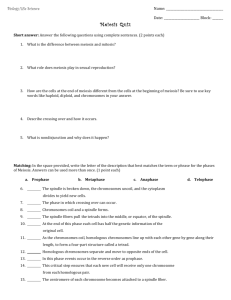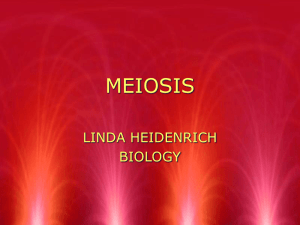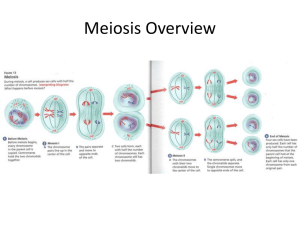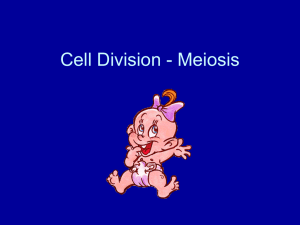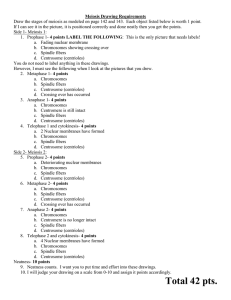1 of 20) Which picture shows prophase?
advertisement
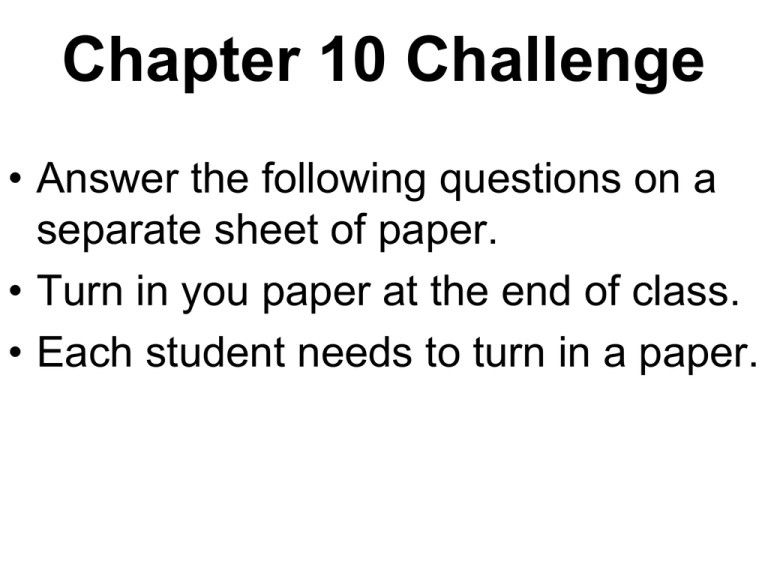
Chapter 10 Challenge • Answer the following questions on a separate sheet of paper. • Turn in you paper at the end of class. • Each student needs to turn in a paper. 1 of 20) Which picture shows prophase? 2 of 20) Which picture shows anaphase? 3 of 20) The diploid cells of the Eurasian butterfly, Leptidea sinapis, in Spain has 2n=106. How many chromosomes would be found in gametes of this butterfly? 4 of 20) Where do the spindle fibers attach to the chromosomes? 5 of 20) During which event (mitosis or meiosis) do the 2 homologous chromosomes form a tetrad? 6 of 20) What type of cell is made during fertilization? 7 of 20) In which picture are additional copies of DNA being created? 8 of 20) Name this object. 9 of 20) Which stage of meiosis is shown in the picture below? 10 of 20) In which picture do the spindle fibers dissolve? 11 of 20) By letter, place the 5 pictures in order from start to finish. 12 of 20) What is being illustrated in the picture below? Does this occur during mitosis or meiosis? 13 of 20) Two part question. A) Where does spermatogenesis take place? B) Where does oogenesis take place? 14 of 20) In which picture do the spindle fibers form? 15 of 20) Cytokinesis is often described as the splitting of the _____. 16 of 20) during which phase of meiosis are tetrads formed? 17 of 20) Match the stage of interphase with the descriptions. You can use the descriptions more than once. G1 Stage ????????????? S stage ????????????? G2 stage ????????????? Descriptions (A) Chromatin copied (B) Cells grow in size (C) Organelles created (D) Normal duty performed 18 of 20) In which picture is cytokinesis taking place? 19 of 20) List all the meiosis characteristics. A) Create gametes B) Creates regular body cells C) Creates diploid cells D) Creates haploid cells E) Creates egg cells F) Creates muscle cells G) Creates sperm cells H) Creates blood cells I) Creates cells that contain 1 of each chromosome J) Creates cells with chromosomes found in pairs 20 of 20) describe the difference between normal cells and cancer cells






